Ethiopia’s Strange Volcanic Landscapes Are Irresistible to Scientists (and Tourists)
Dallol can teach us a lot about Mars, and it needs to be protected.
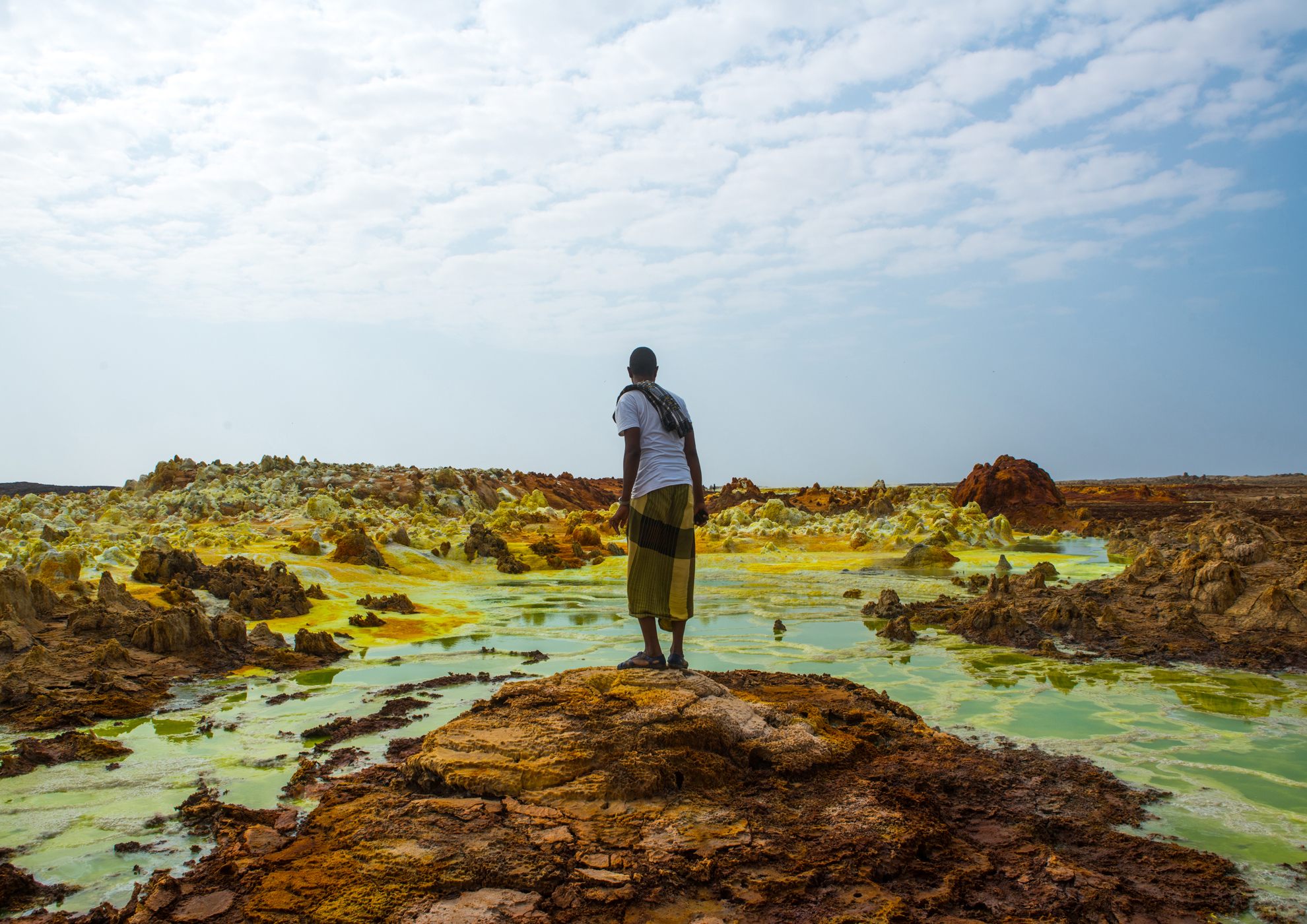
The area around the Dallol volcano in Ethiopia is like nowhere else on Earth. Toxic chlorine and sulfur vapors clog the air and giant “mushrooms” made of iron-rich salt cover the landscape. The groundwater is near boiling when it bubbles up through the Earth’s crust, creating springs you absolutely would not want to bathe in.
The British explorer Wilfred Thesiger described the place as “a land of death.” But for scientists figuring out what life might look like on Mars and other distant worlds, the area’s particular combination of extremes is invaluable.
Extreme environments—whether an incredibly dry desert, an acidic river system, or an extremely hot hydrothermal vent—host some of the hardiest life on Earth. Organisms that can survive in these places are called extremophiles, and they’re pretty much the closest we can get to alien life without leaving our planet. So instead of packing their bags for a trip to Mars, scientists on the hunt for alien life can head to locations on Earth that resemble the Red Planet to figure out what they should be looking for when they finally get their hands on some Mars rock.
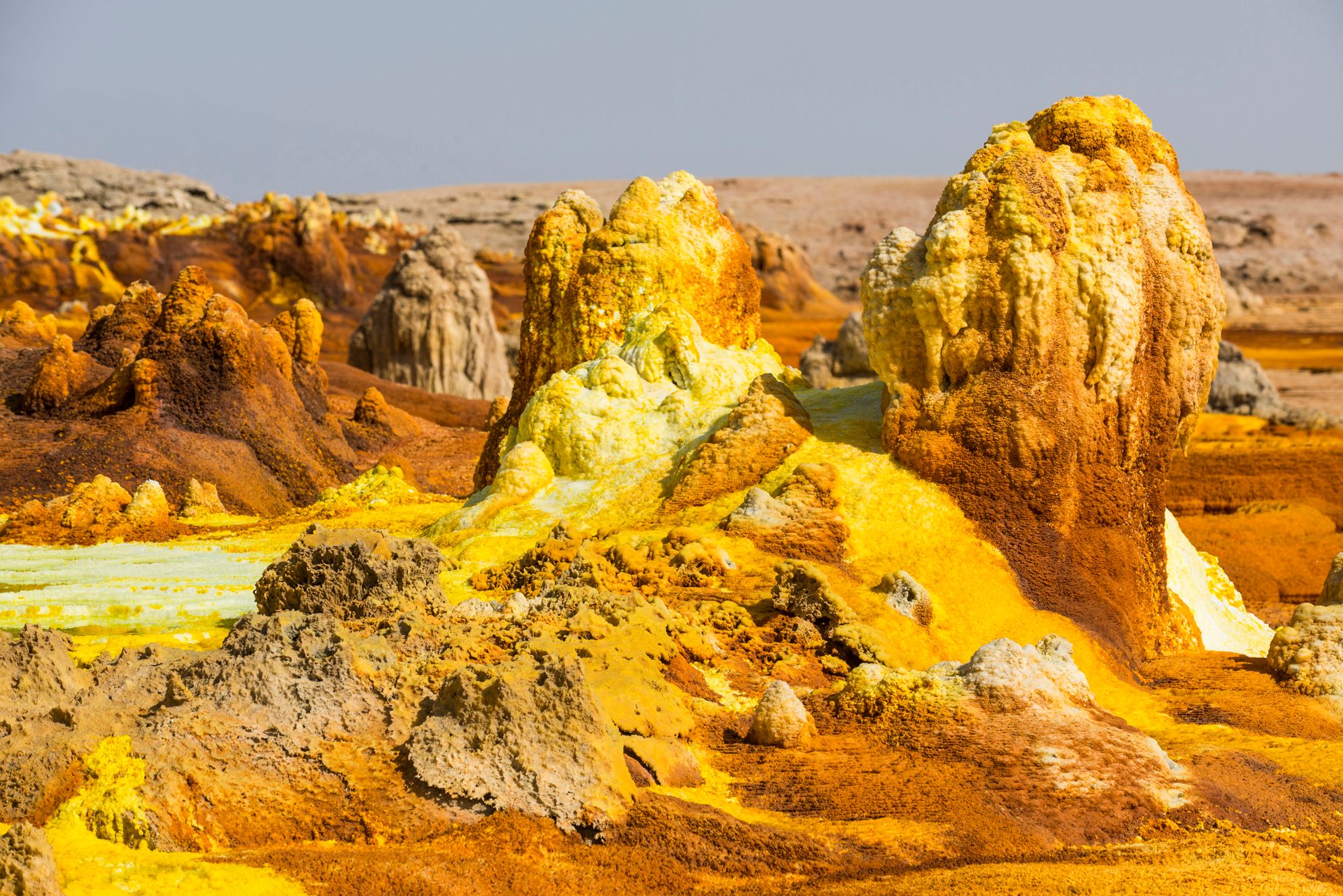
The Dallol volcano sits within the Danakil Depression in the Afar region of northern Ethiopia. It’s been called the hottest place on Earth, with winter temperatures consistently above 93 degrees Fahrenheit and summer temperatures that hit 122 degrees Fahrenheit. It is also one of the lowest places on Earth, with much of it lying hundreds of feet below sea level. The volcano itself only formed in 1926 when groundwater heated up and expanded enough to cause steam to erupt from the earth. The colorful hydrothermal system around it is made up of small, temporary geysers, hot and highly acidic springs, and mounds of salt that spit water, steam, and sulfurous gases. All of this is surrounded by an incredibly dry salt plain that is still mined by hand by the Afar people, who then transport salt blocks across the desert by camel caravan.
The Danakil depression is a shining example of a Mars analog, with a unique combination of extremities all wrapped up in one ecosystem. “Compared to other big hydrothermal systems, this one was completely different and totally unique,” says Barbara Cavalazzi, a geobiologist at the University of Bologna in Italy, who has been visiting the region since 2015. Because it ticks multiple boxes, any life that can survive there would be classed as a polyextremophile.
“The first time I saw it, and I walked through, I thought, ‘This is what I think Mars would look like,’” says Kennda Lynch, an astrobiologist at the Lunar and Planetary Institute in Houston, Texas, who first visited Dallol in early 2019. “It gives us everything. It’s hydrothermal. It’s wet, it’s acidic, it’s salty, and it has iron and it has sulfur in it. It’s all these things together that would make sense for this type of habitable environment on Mars.”
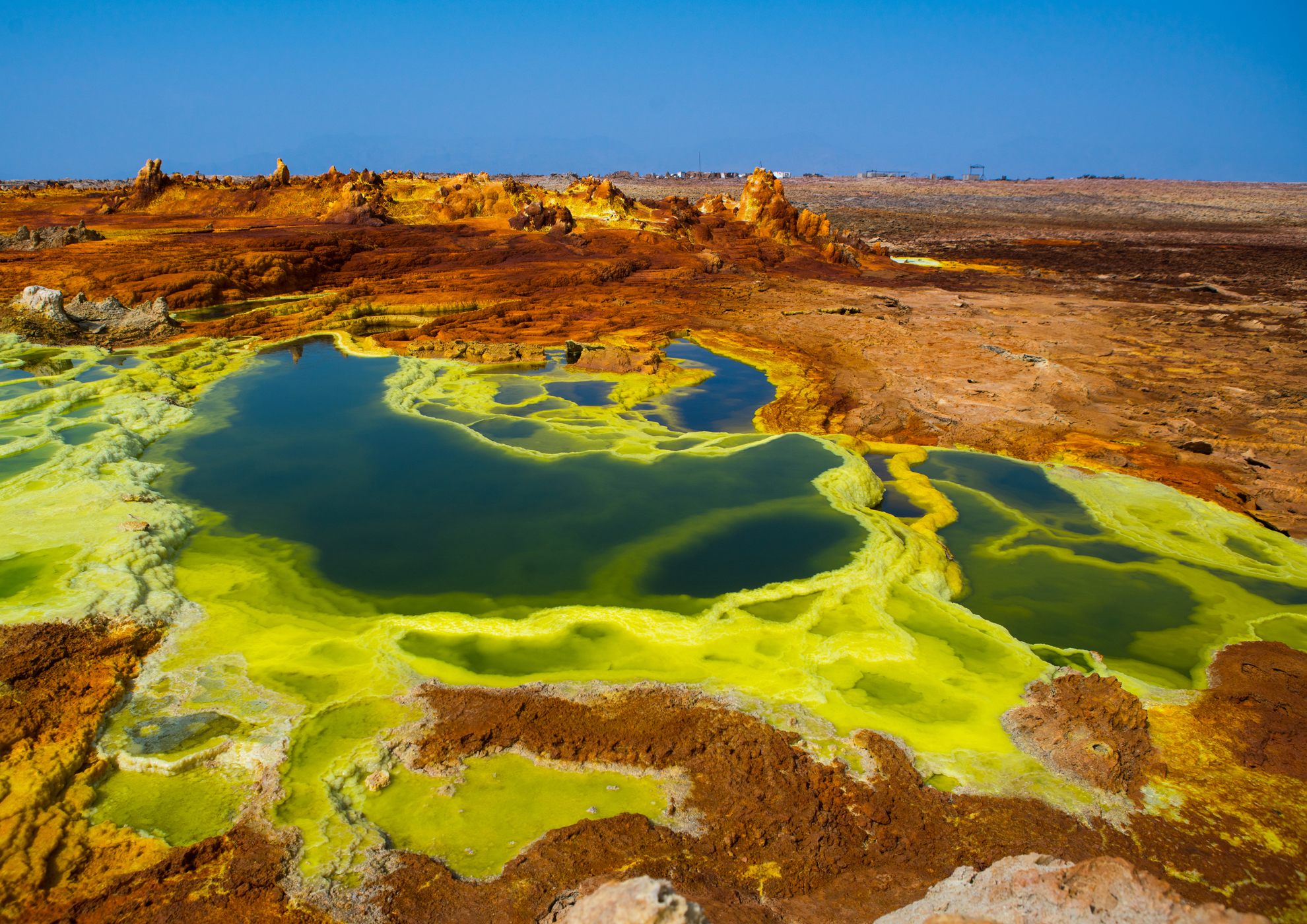
Mars is rich in iron and sulfur, and billions of years ago was a hotbed of volcanic activity. The hydrothermal systems that existed on ancient Mars would have been much like those at Dallol today. Scientists trying to pin down how the earliest life on Earth formed think that the chemical disequilibrium found in hydrothermal systems should make them ideal places for life to start. But if we’re ever going to be able to sift through what’s left on the Red Planet in search of evidence of life, we need to know exactly what to look for.
As a microbial paleontologist, Cavalazzi is interested in the traces that ancient Martian organisms might have left behind in rocks. “The best approach is to understand the modern environment and translate the information to the fossil record,” she says. That means looking at how life is modifying its environment now in places like Dallol, and how those traces might persist throughout time in rocks.
Studying polyextremophiles in Dallol could also help us think about what life might look like in dramatically different but potentially inhabited worlds, such as Saturn’s moon Enceladus or Jupiter’s moon Europa. “The more work we do to understand life here, and the different ways that life could run, it forces us to really expand our view of what habitable is,” says Lynch.

In a study recently published in the journal Scientific Reports, Cavalazzi and her colleagues announced that they have found DNA evidence of incredibly small microbes inside “chimneys” made of salt and minerals in Dallol, but need to do more work to understand how they survive there.
Meanwhile, Lynch plans to analyze some initial samples from her first trip soon, but in the meantime, she is already planning another visit in 2020, when she’ll look at the Dallol hydrothermal system though the same kinds of instruments we use on Mars.
But just as scientists are discovering how useful the area could be in the search for alien life, its scientific sanctity is being put at risk.
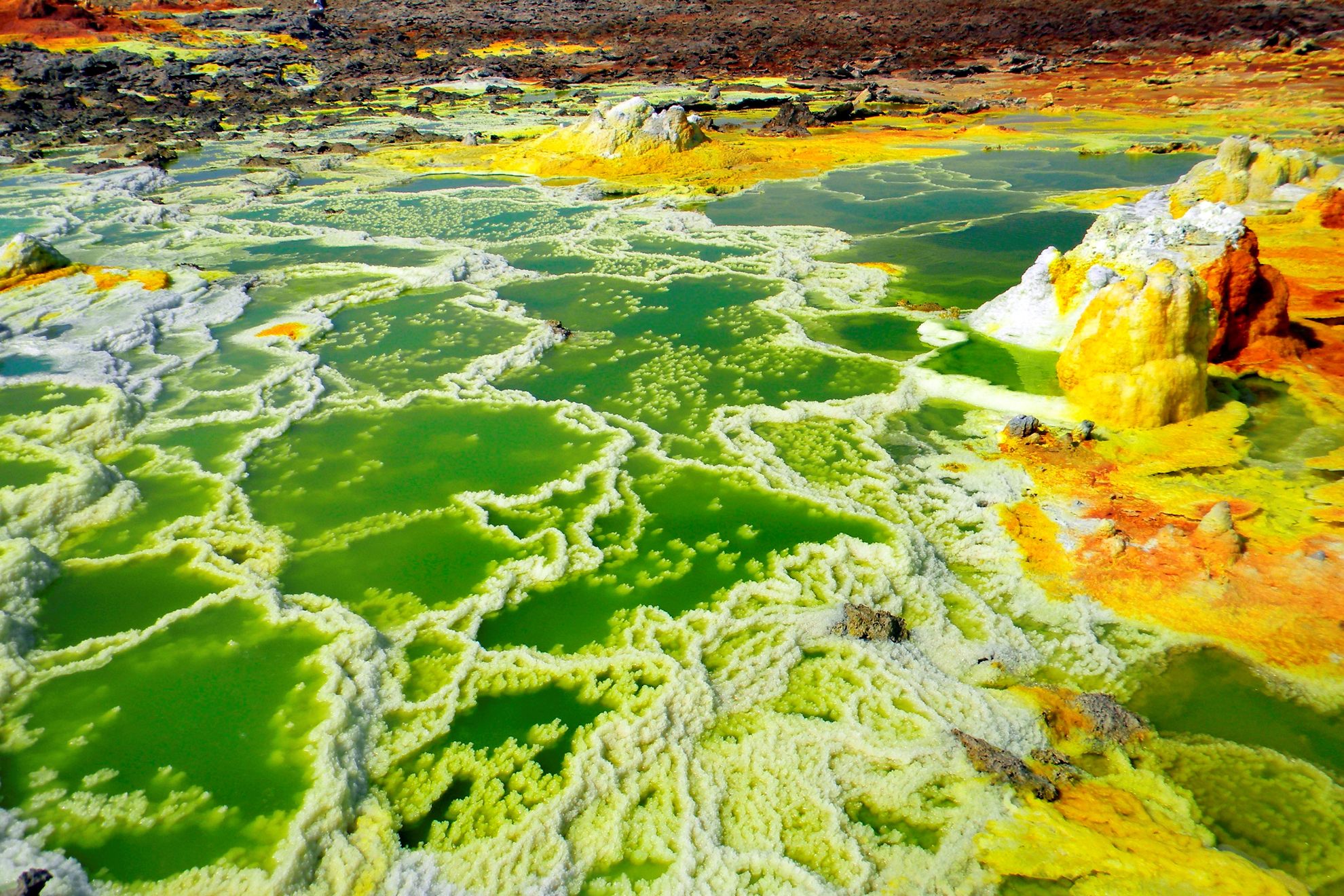
In the last few years, the region has become much more accessible than it once was. When Cavalazzi first visited in 2015, it took a full day’s driving to get from the nearest city of Mekelle to Hamed’Ela, the village she and her colleagues use as a base camp when doing fieldwork. But she says a new road means the trip now takes just three hours.
A 2018 peace treaty between Ethiopia and Eritrea also means the area, which is close to the border, has become safer for tourists, and many now visit to see the distinctive scenery. Cavalazzi fears that the lack of protections for the site coupled with the increase in tourism she’s witnessed will mean that the environment’s microbiology could soon become contaminated. “You already can go there and see a lot of plastic bottles everywhere,” she says.
Tourists are not the only visitors that threaten the area: Danakil is rich in potash and industrial mining operations could also wreak havoc. Exploration of the area’s mining potential has been going on for over a decade, says Asfawossen Asrat, a geologist from Addis Ababa University in Ethiopia, and at least two companies are still actively exploring, but have yet to begin exploiting the potash.
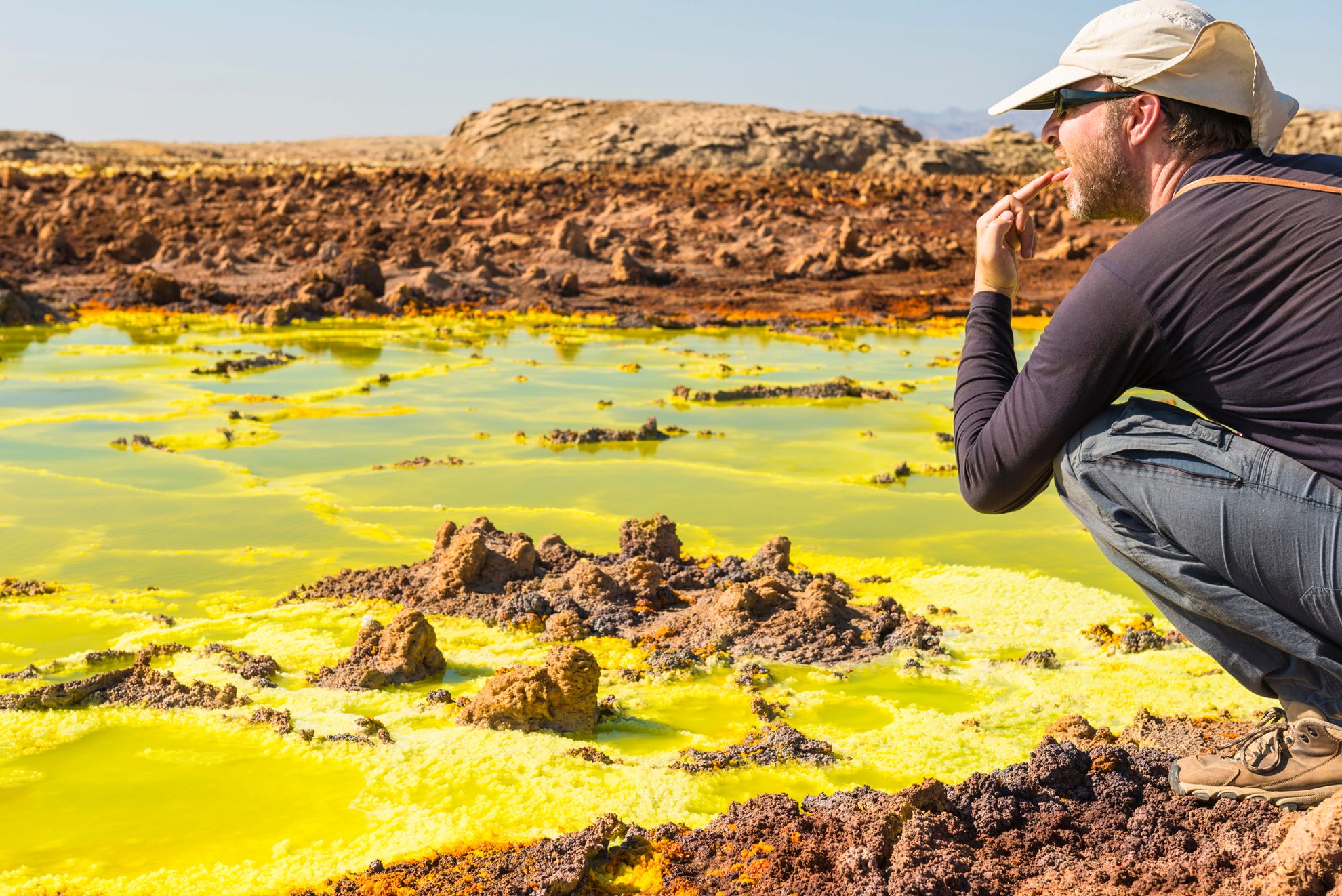
And while mining and tourism might be good for Ethiopia’s economy—the country made nearly 50 percent more money from the travel sector in 2018 than it did in 2017—anything that harms the unique landscape around Dallol could jeopardize the country’s scientific potential. “Ethiopia wants to be science leader, they want to be a science innovator,” says Lynch. “So we have to work with [local scientists] to help them work with their government to say, look, we need to protect the site a little bit more.”
Part of the problem, says Asrat, is that the government doesn’t have existing laws that can be used to protect places specifically for their geology. “They can identify a park. They can identify a wildlife protection area or biodiversity area, but not a geological site,” he says. Asrat and his colleagues are doing what they can to raise awareness and help convince the government of the long-term benefits of protecting the area, but he says it feels like they are swimming against the tide.
Ultimately protecting the Dallol hydrothermal system and the surrounding area will benefit more than just scientists who want to study it to learn about potential life on Mars. “It’s a national resource for the country,” says Lynch. “We want to help them do what they can do to protect it, value it, and benefit from it.”
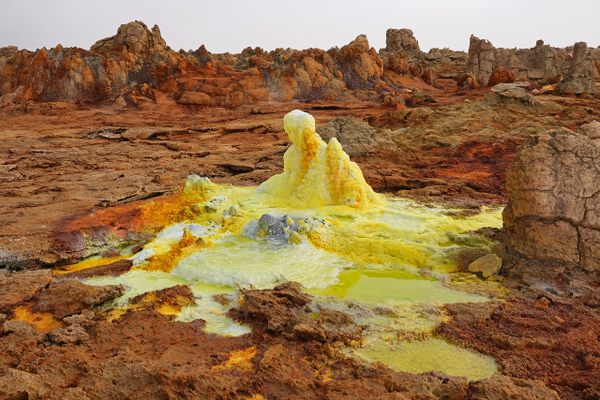





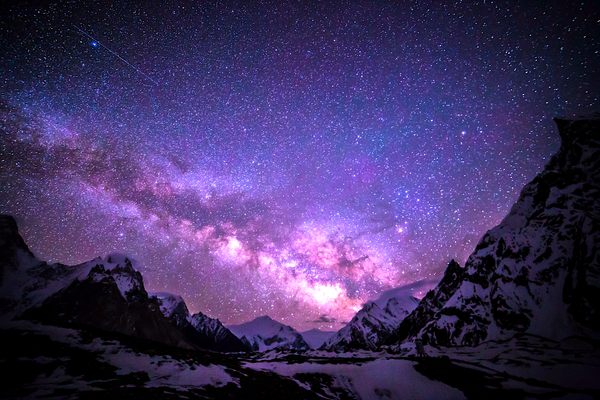














Follow us on Twitter to get the latest on the world's hidden wonders.
Like us on Facebook to get the latest on the world's hidden wonders.
Follow us on Twitter Like us on Facebook